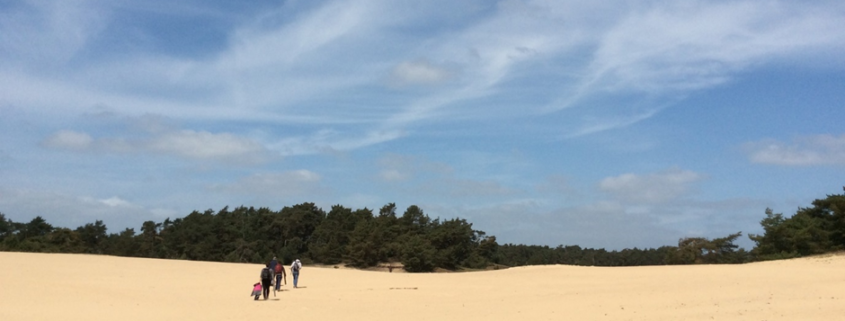Global Geoarchaeology: theory and practice
Global Geoarchaeology: theory and practice
4-6 March 2020, Vrije Universiteit Amsterdam
The course takes place, Wednesday and Friday in the new NU (New University) building on the VU Campus. Thursday will be in the field. https://www.vu.nl/en/about-vu-amsterdam/contact-info-and-route/route-description/map-vu-campus/index.aspx
ECTS: 2 credits for attending all days, and completing the assignments. The course will finish with a blog post and a research report due 1 week after the course.
Teachers: Professor Ian A. Simpson, (i.a.simpson@stirling.ac.uk)
Dr. Sjoerd J. Kluiving (s.j.kluiving@vu.nl)
Admission, logistics:
Students can administer for this course by filling out the registration form on this webpage.
Any questions relating to the content of the course can be sent to Sjoerd Kluiving, s.j.kluiving@vu.nl.
Reading:
Reading for this unit is found as general texts on geoarchaeology and environmental history giving context to the module, and as research papers. It is strongly recommended that the references are read prior to the lecture / seminar session as a foundation for discussion. You can find the full course description and reading list here.
Program
Wednesday 4 March 2020, 9.00 – 17.00, NU-5A-65, room on 5th floor in new NU building.
Concepts and applications
Session 1: ‘Reading global’ soils and sediments
Session 2: Regional Geoarchaeologies – case studies
Session 3: Guided preparation and short student presentations on research projects with a geoarchaeological focus,
Session 4: Short introduction on field day with theory of maps, sediments and soils
Thursday 5 March 2020, 9.00 – 17.00
Fieldwork Practice
Session 5: Wekeromse Zand (Pleistocene and Holocene records)
Session 6: Amstelveen (Holocene records)
Friday 6 March 2020, 9.00 – 17.00, NU-4A-67, room on 4th floor in new NU building.
Laboratory practice
Session 7. Mapping exercise NW Europe and discussion
Session 8: Lacquer peel description exercise and discussion NW Europe
Session 9: Thin section micromorphology of Wekeromse Zand thin sections
session 10: Synthesis, discussion and outlook on research report.
Introduction:
Geoarchaeology is a growing and evolving research discipline at the intersection between geomorphology, environmental history and archaeology (Butzer, 2008). Geoarchaeology as a research field continues to grow as analyses and techniques more typically used in earth and environmental sciences are shown to have use in interpreting the archaeological record (Diskin et al, 2013). Geoarchaeology is ‘the science that studies geo-bio-archives in an archaeological context by also considering historical and archaeological data sources in its syntheses’; it emphasizes a multidisciplinary role, as a sub-discipline of geomorphology, between the geosciences and cultural sciences (Engel & Brückner, 2014). Geoarchaeology provides insights into landscape reconstructions, human behaviours, and cultural processes that are a backdrop to landscape change (Kluiving et al, 2015). In this course, a toolbox is presented to study geoarchaeological research problems in a range of cultural and environmental contexts.
Objectives:
This research-led course gives theoretical and practical frameworks for interpreting soils, sediments and landscapes as records of the past and provides training in field and laboratory methods that identify, quantify and evaluate early human activities and environmental imprints. These understandings and skills contribute to new landscape histories in different regions of the world. This work offers important and challenging perspectives on how interpretations of soils and sediments contribute to how people lived with and adapted to environmental change and has resonance with contemporary debates on sustainability, resilience and heritage management.
Learning outcomes:
- Understanding the principles of interpreting landscapes and sediment stratigraphies as records of the past.
- Understanding the contributions of landscape studies and sediment analyses in the interpretation of key aspects of landscape history including multi-scale and multi-topical cartographic analysis, sediment description (from outcrop, core and lacquer peel), coring practice, as well as micro-morphological observations.
- Ability to integrate landscape histories and sedimentary evidence with inter-disciplinary sources, including documentary, archaeological and environmental information, to address broader issues of society – environment change interactions.
- The module provides a foundation for research-based field and laboratory Dissertation and Thesis topics in geoarchaeology and landscape history.
Acquired skills:
- Competence in the application of science-based methods to answer archaeological research questions.
- Competence in the description, analyses and interpretation of soils and sediments from archaeological contexts.
- Competence in cross-disciplinary approaches applied to society-environment interactions.
Assessment:
Blog Post (40%): Highlighting learned themes during the programme
Research report (60%). (3000 words, excl. figures, images, photos and references): Highlighting geoarchaeological applications to student research programmes.
The minimum grade to obtain a pass for a module is a 60% score.
Register for the course by filling out the contact form below!


